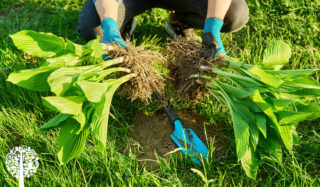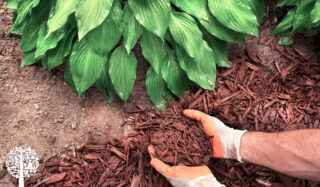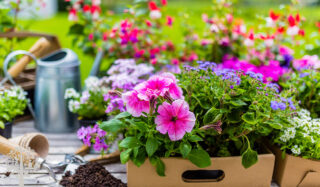It’s August, and the dog days of summer have arrived. The garden is full of blooms, and many veggies are ready to harvest! Believe it or not, it’s time to prepare for the fall season.
Re-Homing Perennials
As the high heat of summer slowly wanes towards the end of the month, those clumps of early summer blooming perennials that were getting a little unruly can be divided.

Hostas, daylilies, poppies, Shasta daisies, bell flowers (campanula), ornamental grasses, and Asiatic and oriental lilies can all be split and put into new homes before the first frost in the fall.
It’s also time to give perennials in containers a bigger home so their roots stay cozy all winter. When transplanting container plants, make sure you have a pot twice the circumference of the root ball. This way, there will be enough space around the inner root system to insulate the plant from sub-zero dips in temperature.
Late August is also perfect for transplanting flowering shrubs such as weigela, hydrangea, spirea, camellia, and magnolia. They’ll have time to root during the cool fall months and be ready to show their blooms next spring and summer.
Veggies And Herbs
The August harvest of beans, cauliflower, cucumber, and zucchini has left space in the veggie patch to add more kale, a few extra broccoli plants, Brussels sprouts, and cool-loving chard and spinach.
All of the above will appreciate the cool late summer nights and be ready for harvest in time for Halloween. In August, cutting back herbs like parsley, mint, cilantro, thyme, and sage will encourage a new flush of growth for one last fall harvest.
Mulch

Summer takes its toll on the mulch and compost layers built up in the garden beds throughout the spring and early summer. They’ve either eroded or disappeared into the soil. Adding a top layer of mulch in late August offers nutrients to the earth and provides the plants a snack before they hibernate in the fall.
Add And Maintain Color
As petunias, lobelias, and other summer annuals fade, replace them with fall stalwarts like pansies and Garden Mums. Keep deadheading geraniums and fuchsia so they will last through until the first frost.

A little tidy-up of the undergrowth and fading foliage of early summer bloomers like campanula (bellflower) and the fading peony and daylily leaves is wise. Doing so will help make the asters, golden rudbeckia, bright yellow sunflowers, fall anemones, and purple seeds of the beauty bush stand out even more. The garden will look refreshed and radiant for early fall.
Winter is ending in the southern hemisphere, and vegetable gardens are being planted in time for a Christmas harvest. Another layer of mulch refreshes what’s been lost during the winter months and keeps plants cool during the heat of the growing season.
That’s A Wrap!
It’s been a full year of garden tips – I hope they’ve helped your garden thrive. The best garden tip for any time of the year is to take a moment to appreciate the hard work you put into your plants and what they give back to you.
Join me next month for the “plant of the month” as we continue to garden and grow together!